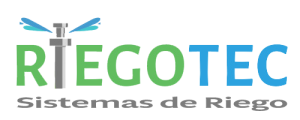As we exit the small business financial crisis caused by the corona virus, many lenders are either tightening their credit requirements or pulling out of lending altogether—at least in the short term. In a post-COVID world, factoring is one of the financing options that will still be available to small business owners before a bank loan, a line of credit, business credit cards, or other bank financing comes online. AR factoring also enables companies to be in more control during the loan process compared to bank lending.
And in many industries, factoring receivables is a preferred way to access capital. Let’s say a business has $100,000 in eligible accounts receivable and the advance rate is 80%. As we delve deeper into our how to calculate accrued vacation factoring guide, it’s crucial to weigh the advantages and disadvantages of factoring AR. Understanding what is AR factoring in terms of its benefits and drawbacks can help businesses make informed decisions about whether this financial tool is right for them. It’s important to note that if interest rates are high, factoring companies may pay less for an invoice due to higher borrowing costs; if interest rates are low, they may pay more. Today, accounts receivable factoring has become a global industry, with factors handling billions of dollars in transactions annually.
Improve your business credit history through tradeline reporting, know your borrowing power from your credit details, and access the best funding – only at Nav. Business lines—or operating lines—of credit are another commonly used form of post-receivable financing. This just means it’s financing after an invoice has been generated (purchase order financing is the inverse; it’s a form of pre-receivable financing).
Do you have to factor every invoice?
With HighRadius’ Autonomous Receivables solution, you can eliminate the bottlenecks and inefficiencies that often plague manual accounts receivable processes. It enables businesses to automate tasks such as invoice generation, payment reminders, dispute resolution, and cash application. Through leveraging machine learning and artificial intelligence, the platform optimizes collections strategies and provides real-time insights into customer payment behavior. Cash flow issues can significantly impact how to calculate break the growth and profitability of your business.
Accounts Receivable Factoring: What is Factoring Receivables?
Business owners receive financing based on the value of their accounts receivable. The business owner’s credit score doesn’t determine creditworthiness when factoring receivables, however. Since lenders earn money by recouping payment from businesses’ customers, not businesses themselves, factoring companies focus on the creditworthiness of those customers instead. This can make factoring a good option for businesses facing credit challenges or startups with short credit histories. Factoring companies often conduct due diligence and credit checks on customers before deciding to factor your invoices. While this isn’t a direct fee, it’s an indirect cost as it can affect your agreement terms.
Step 1: Submission of Invoices
- Let’s walk through an example of how much accounts receivable factoring might cost based on average figures.
- This added security for the business comes at the cost of higher factoring fees, reflecting the increased risk the factoring company assumes.
- When a business sells its unpaid invoices to a factoring company, it receives an upfront payment, usually a percentage of the total invoice value.
- This type of funding is best for businesses that have a steady stream of invoices, but may struggle getting customers to pay promptly.
- You’ll sell the invoices to your factoring company, which offers an 80% advance rate with a 3% factoring fee.
- There may be some nuances depending on the factoring company, but with FundThrough, getting invoices paid early is quick and straightforward.
Available to startups as well as established companies, Riviera Finance provides funding within 24 hours after invoices are verified. It offers non-recourse factoring and cash advance amounts up to 95% of the invoiced amount. If your business has high profit margins and can afford to wait for customer payments, you may not need to look at options such as invoice factoring.
For cash-strapped businesses with late-paying customers, accounts receivable factoring can help them get paid without chasing down customers. It’s more accessible, gives businesses more control over their finances, and frees up resources spent on collections activities. These FAQs provide a quick overview of key aspects of accounts receivable factoring. Remember, while factoring can be a powerful financial tool, it’s important to carefully consider your specific business needs and consult with financial professionals before making a decision.
Factoring doesn’t require good credit or a traditional loan application process from the business. Accounts receivable factoring can help companies provide better customer service by offering more flexible payment terms and reducing the time and effort required to collect customer payments. After receiving payment in full, the factoring company clears the remaining balance, typically 1 – 3%, to the selling company. The factoring company makes a profit by collecting on the full amount of the invoice.
